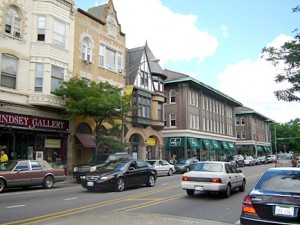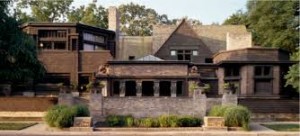Democracy is a fighting word these days. The latest political brawl is over charges that selection of delegates to the Democratic and Republican conventions is undemocratic. Voters in both parties are angry because they believe the Establishment (whoever that is) is running things without the consent of the governed.
Sen. Bernie Sanders is calling for a revolution (without pitchforks and guillotines, I hope) to transform the country into a socialist paradise. Donald Trump is seeking popular support to make deals behind closed doors. A few years ago union supporters protested against Wisconsin Gov. Scott Walker and chanted: “This is what democracy looks like.” Voters disagreed and demonstrated that democracy looks more like a ballot box than a mob.
My model of democracy has always been my hometown of Oak Park, Illinois: a Chicago suburb of about 50,000 that produced Frank Lloyd
Wright, Ernest Hemingway and one of the country’s first fair housing laws. My parents moved there a few years after citizens tossed out corrupt politicians in 1952 and elected a new municipal government with a hired village manager and nonpartisan village board.
The Village Manager Association has dominated local elections ever since because it’s not a political party. Its function is to screen candidates for village office with an open, widely representative selection process that embraces insurgents. I once served on the 50-person nominating committee even though I was not a member of the association.
Citizen participation in Oak Park went on steroids in the late 1960s after racial change swept the adjacent West Side of Chicago. The village government responded with a commitment to integration and renewal, and mobilized the community to make it happen.
After I bought my first house in Oak Park in 1969, I was recruited for a village-sponsored citizen committee to guide a new comprehensive plan in a serious of fractious public meetings. My wife and I also joined an independent community organization that pressured the village to improve police protection and picketed local banks to fight racial discrimination in mortgages. The organization disbanded a few years later when all its objectives were met.
Oak Park launched a dizzying array of initiatives to upgrade apartment  buildings, beautify the community, enforce fair housing, improve the parks and more. Every initiative was driven by a village commission, committee or task force of citizen volunteers working with village staff – including a task force on which I served to select new street lights. It was said that if all the committees were disbanded the divorce rate would skyrocket.
buildings, beautify the community, enforce fair housing, improve the parks and more. Every initiative was driven by a village commission, committee or task force of citizen volunteers working with village staff – including a task force on which I served to select new street lights. It was said that if all the committees were disbanded the divorce rate would skyrocket.
I wound up working on several initiatives and that was not unusual. Hundreds of ordinary residents did as much or more because village officials welcomed anybody who wanted to volunteer.
Virtually every segment of the community was engaged. A nonprofit association conducted a marketing program to attract new residents to racially integrated neighborhoods. My wife was in a church-basement women’s group that came up with a program to insure homeowners against loss resulting from racial change. Realtors supported a ban on for-sale signs even after the law was overturned in court. Local businesses formed an economic development partnership with the village, and I served on its board in the 1980s (with presidents of the banks I used to picket).
The result was a successful, lively, racially diverse community that continues today. The process was often disorderly, with impassioned arguments at every meeting. But it was democracy and it worked.
I think about Oak Park often these days. My adopted hometown of Albuquerque is pushing through a rapid-transit system that practically nobody wants while the rest of the city falls apart. I’d like to think that citizens can do what we did in Oak Park to turn around the city. Or the state, or the country.

